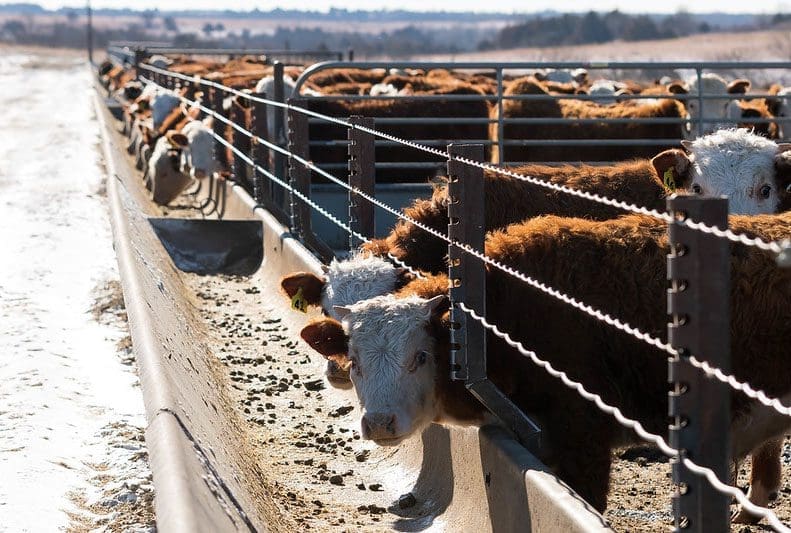K-State cattle experts explain how cattle can get this sickness and ways to manage it
By Lisa Moser, K-State Research and Extension news service
MANHATTAN, Kan. — Anyone who has spent time with toddlers knows that they need to be watched closely to make sure they don’t put non-food objects into their mouths to avoid a hazard. Much like toddlers, cattle also like to explore with their mouths and sometimes eat objects that they shouldn’t, said the veterinarians at the Kansas State University Beef Cattle Institute.
Speaking on a recent Cattle Chat podcast, veterinarians Brian Lubbers, Brad White and Bob Larson discussed the signs of hardware disease and offered suggestions on ways to manage it once it is suspected to be impacting an animal.
“Hardware disease happens when cattle put metal or sharp objects in their mouth, swallow it and then it gets into one of their stomach compartments where it can puncture a hole and move into other parts of the animal’s body,” Lubbers said.
White said items cattle might inadvertently eat include wires, nuts and bolts. Sometimes those get into the silage by accident in the harvesting and ensiling process.
Lubbers explains that the foreign object can migrate to other places in the body, which can cause a significant health risk to the animal.
“When the object moves out of the stomach it is carrying the bacteria that was in the digestive tract with it and that can lead to infections,” Lubbers said. “Oftentimes the body develops abscesses to wall off the disease, but sometimes that wire can get into the sac surrounding the heart and lead to an infection.”
Larson said cattle with heart trouble will stand with their elbows out and show signs of labored breathing. Animals that show these symptoms need to be evaluated quickly by a veterinarian.
Oftentimes, Larson said this disease is hard to detect.
“For cattle that ‘ain’t doing right,’ hardware disease is one of the first things we suspect when we evaluate them,” Larson said.
Treatment options are limited, said the veterinarians. However, one way to try to keep the foreign objects from moving where they shouldn’t go is to deposit a magnet down the cow’s throat that will settle in the reticulum (one of the cattle’s four stomach compartments).
“The idea is that the metal will stick to the magnet making it less likely to migrate, but it is better if we can keep them from eating these things in the first place,” Larson said.
He said that there are magnets used in the feed milling process that keep the loose metal from inadvertently ending up in the silage.
“If you are producing your own feed, magnets in the mill or feeder wagon are recommended,” Larson said.
To hear the full discussion, listen to the Cattle Chat podcast online or through your preferred streaming platform













